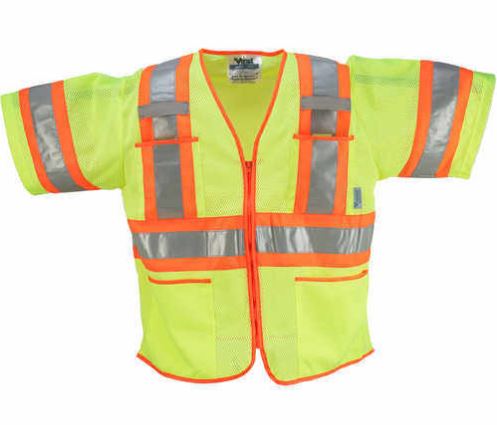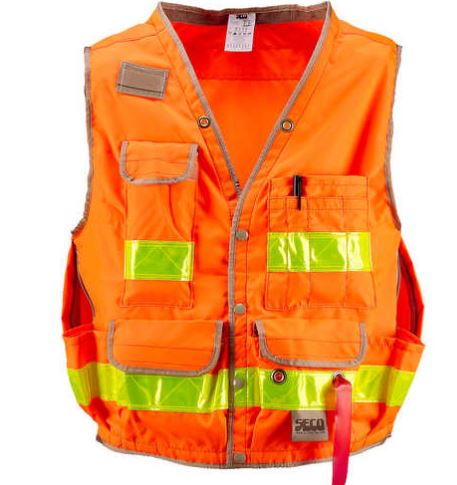Be Seen in Your Safety Vest!
Personal Protective Equipment (PPE) is a standard operating procedure for anyone working on construction sites or other project sites. For most staff members, the staples of our PPE are:
- Hardhat
- Safety Glasses
- Hearing Protection
- Work Boots
- Work Gloves
- Hi Vis Safety Vests
Who is ANSI?
The American National Standards Institute (ANSI) is a private organization that establishes standards for thousands of classes of products and services. In the U.S., the Occupational Safety and Health Administration (OSHA) oversees and enforces worker conditions. OSHA uses ANSI standards for several PPE categories.
For safety vests & safety apparel, ANSI has developed rating classifications for high visibility apparel which is based on several different criteria:
- Work environment risk exposure
- Total reflectivity of the apparel
- Total area of color contrast of the apparel
Do you know the difference? What differentiates Class 1, 2 and 3? Let’s look at the three-rating classifications most-known to the construction industry.

ANSI Class 1 Safety Vest
A Class 1-rated vest carries the lowest rating of all the safety apparel classifications because it has the lowest amount of reflective material. In the construction industry, this class is not used. These vests are typically used in non-traffic exposed areas, like auditoriums, sporting events or parking lot operations where the color contrast is important but reflectivity, or traffic exposure conditions are considered low speed.
ANSI Class 2 Safety Vest
A Class 2-rated vest has been the standard specified vest type for numerous governmental transportation agencies. These vests are required where the worker is exposed to traffic speeds of 50mph or less. A Class 2 vest must have at least 201 square inches of reflective tape on it as well as at least 775 square inches of contrasting yellow or green background material.
ANSI Class 3 Safety Vest/Apparel
 The Class 3 rating requires the highest area of contrasting color exposure – 1240 square inches or more of contrasting yellow or green background material and at least 310 square inches of reflective material. Because of the need for such a high contrasting area, these usually are more likely to be a sleeved shirt-type vest. Flaggers working in night-time work activities to be fully covered in Class 3 apparel, meaning both shirts and pants of contrasting color and reflectivity are necessary. Others exposed to traffic speeds in excess of 50mph are required to wear a Class 3 vest.
The Class 3 rating requires the highest area of contrasting color exposure – 1240 square inches or more of contrasting yellow or green background material and at least 310 square inches of reflective material. Because of the need for such a high contrasting area, these usually are more likely to be a sleeved shirt-type vest. Flaggers working in night-time work activities to be fully covered in Class 3 apparel, meaning both shirts and pants of contrasting color and reflectivity are necessary. Others exposed to traffic speeds in excess of 50mph are required to wear a Class 3 vest.
Color selection is also important; the permitted colors are fluorescent yellow and orange. However, the color selection may be determined by the client, industry, or the environment. For example, in certain times of year, like autumn and hunting season, orange safety vests permit the worker to be more obviously seen and therefore should be worn.


Comments are closed.